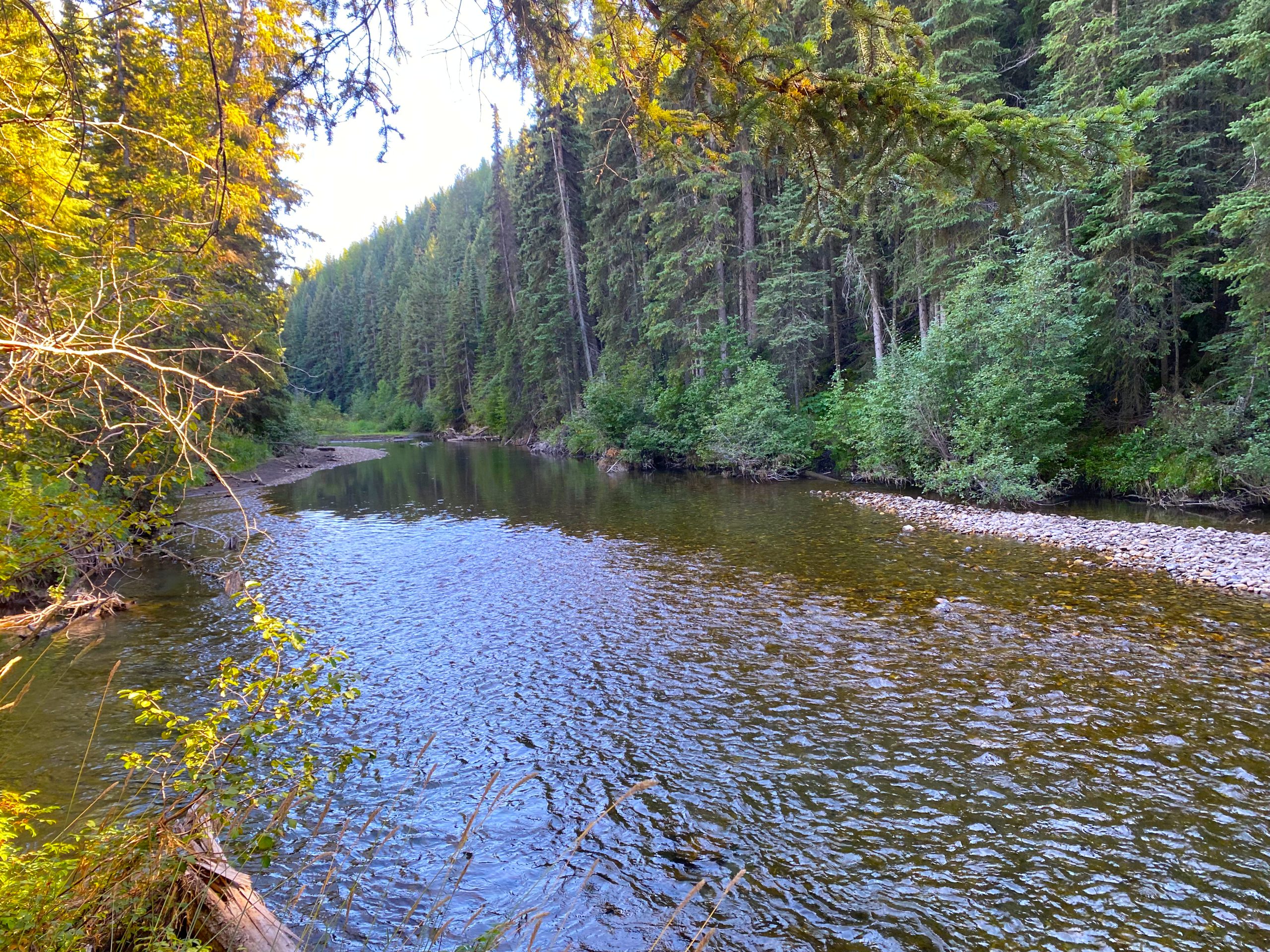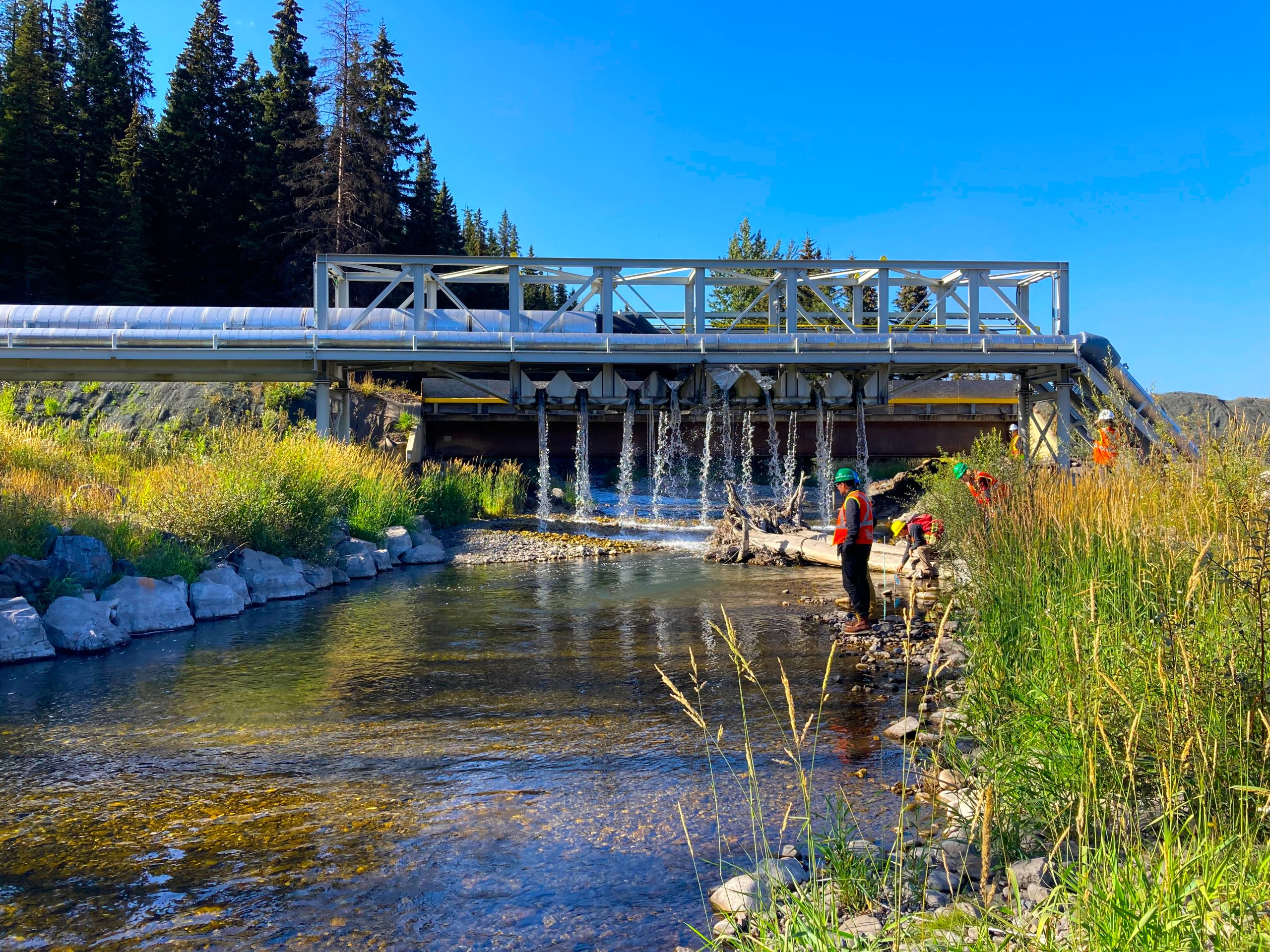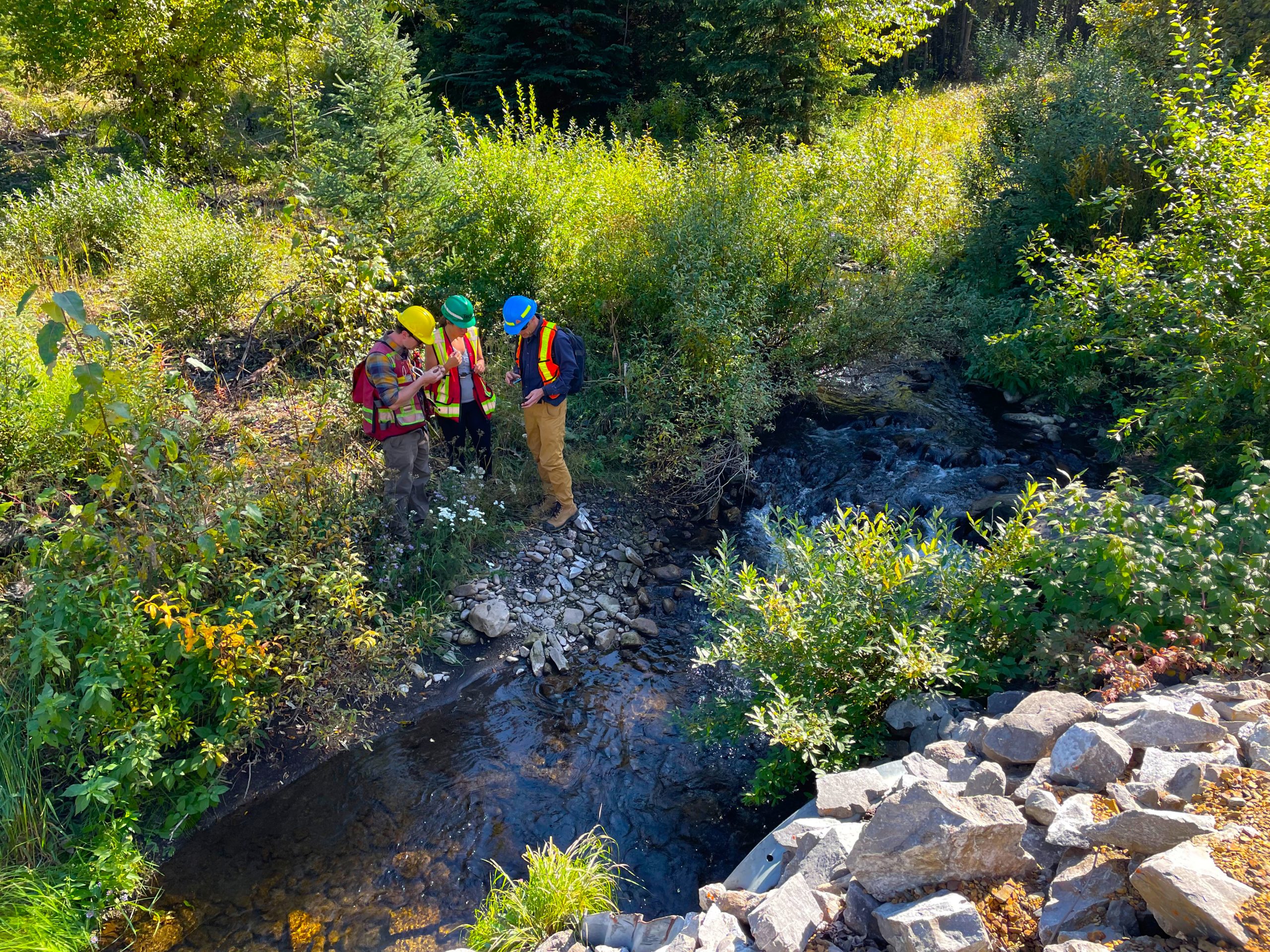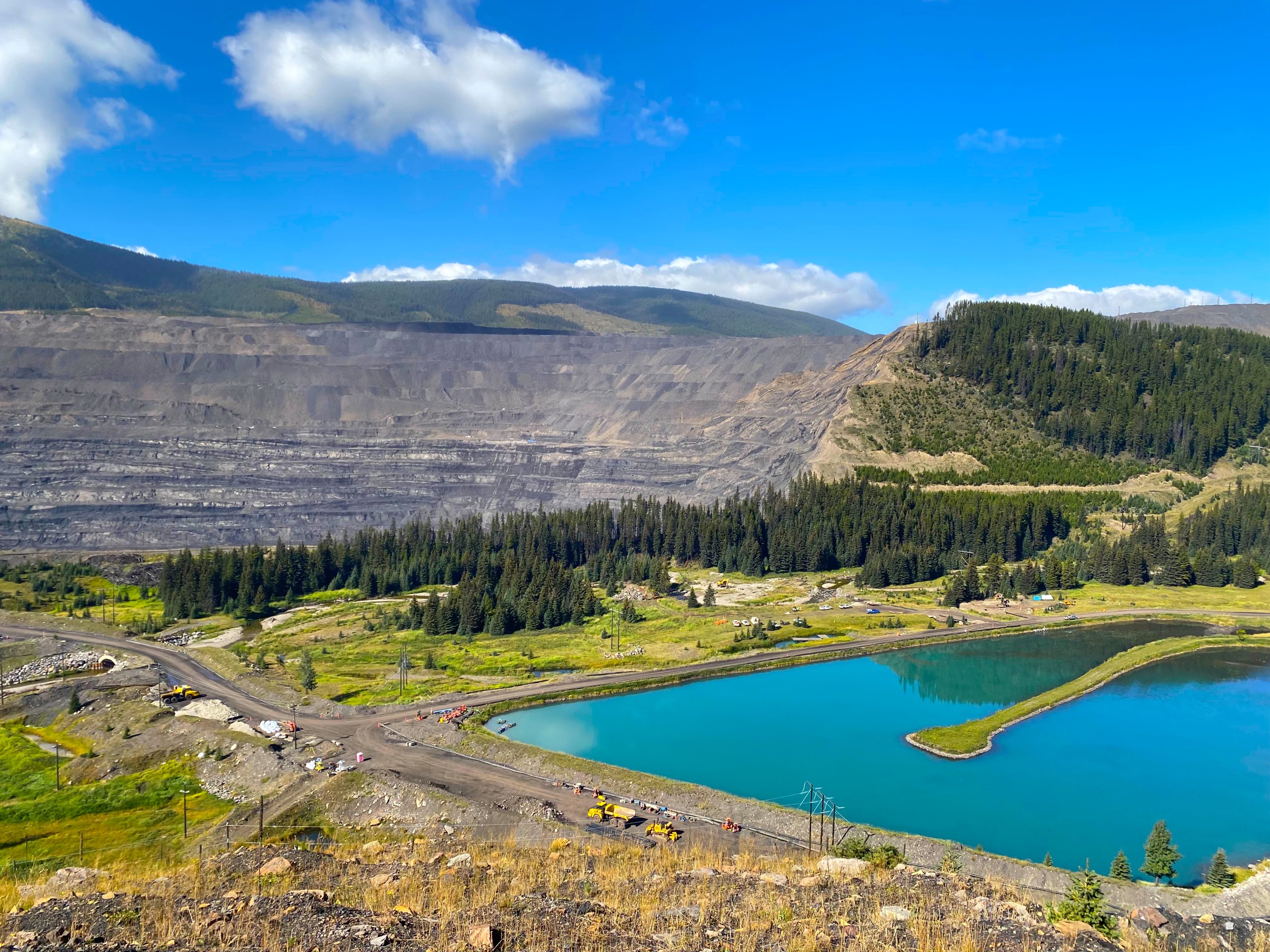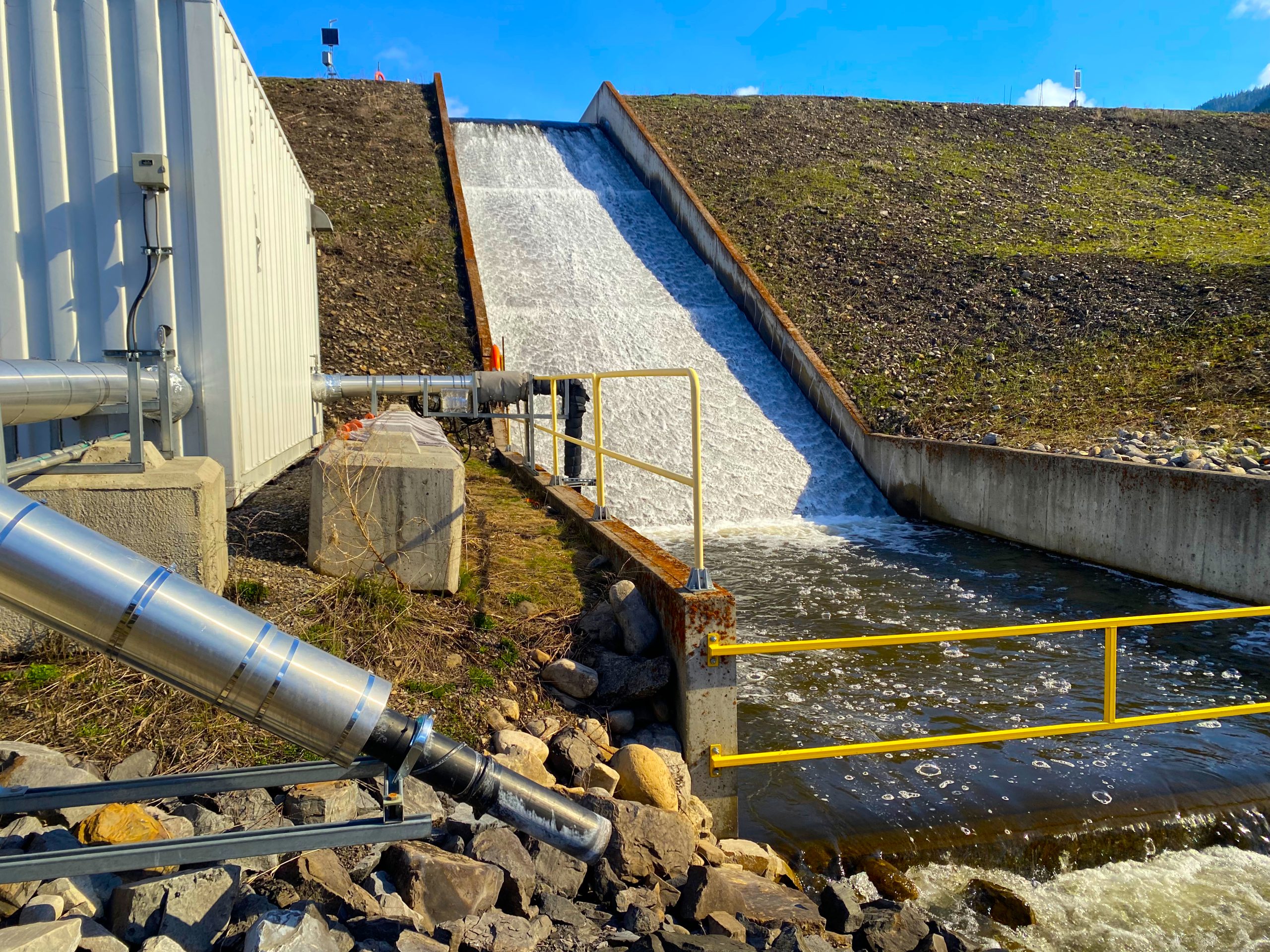On this page
Treatment summary
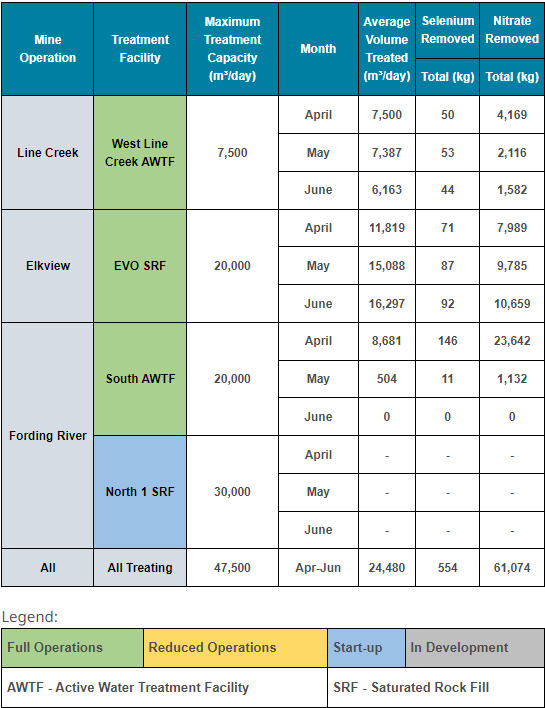
Highlights
Three treatment facilities were fully operational in April – June 2023 (Q2).
- The West Line Creek Active Water Treatment Facility (AWTF) treated at or close to its full design capacity in all three months. The facility experienced one longer (82 hour) downtime event in early June for planned maintenance of the ozone generator. The facility operated 94.5% of the time this quarter.
- The Elkview Operations Saturated Rock Fill (EVO SRF) continued to increase maximum treatment volumes, reaching nearly 18,000 m3/day in late May and early June. The facility also experienced notable downtime events, primarily on the Erickson Creek treatment source. The Erickson intake did not operate for over 200 hours from April 16th to May 1st to maintain compliance with water temperature limits in Erickson Creek. The facility also experienced several unplanned shutdowns totalling 63 hours in May and June resulting from problems with the Erickson Creek intake and pipeline. Natal Pit treatment operated 96% of the time this quarter while Erickson Creek treatment was only able to operate 84% of the time.
- The Fording River Operations South (FRO-S) AWTF operated from April 1st to May 2nd before being shutdown for the remainder of Q2. While it was operating, the facility treated approximately 59% of available influent and operated 88.5% of the time. Treatment volumes were limited by the heat exchangers, which were cleaned and replaced during April.On May 2nd, the facility was placed into recirculation mode in response to an acute toxicity failure in the Buffer Pond, which is where treated water goes before being released into the environment. Testing and investigation is ongoing, but preliminary findings have determined that the cause of the toxicity was in the buffer pond and not within the treatment facility itself. The issue has been addressed and the facility began discharging treated water again on July 16, 2023.
The Fording River Operations North 1 Saturated Rock Fill (FRO-N1 SRF) treatment facility is the next major treatment facility in the Elk Valley. When fully operational it will have the capacity to treat up to 30,000 m3/d, which will be the largest in the Elk Valley. The facility transitioned into the start-up phase on June 13th but is not yet discharging to the environment. The facility is currently on track to meet its target operational date of December 31, 2023.
Overall, Elk Valley treatment facilities operated at approximately 50% of total potential capacity and were running approximately 72% of the time this quarter. Both values are considerably lower than in Q1, largely due to the FRO-S AWTF shutdown from May 2nd through June 30th. Facilities removed 554 kg of selenium and 61,074 kg of nitrate.
Treatment progress
Amount of selenium removed and remaining in the Elk River
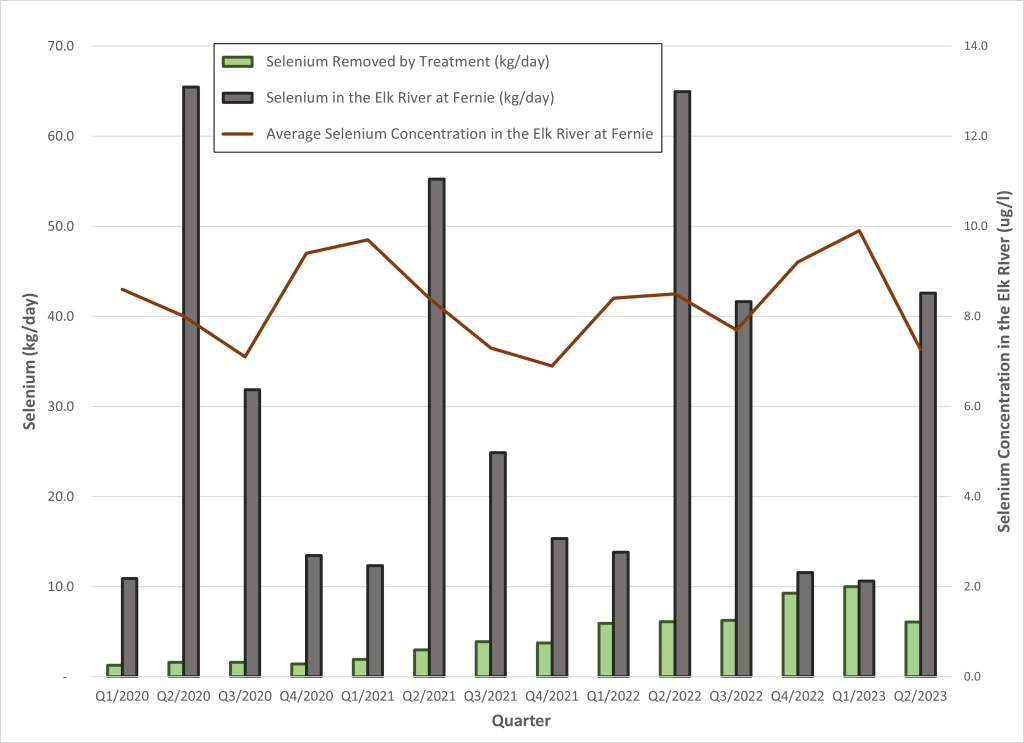
Amount of nitrate removed and remaining in the Elk River
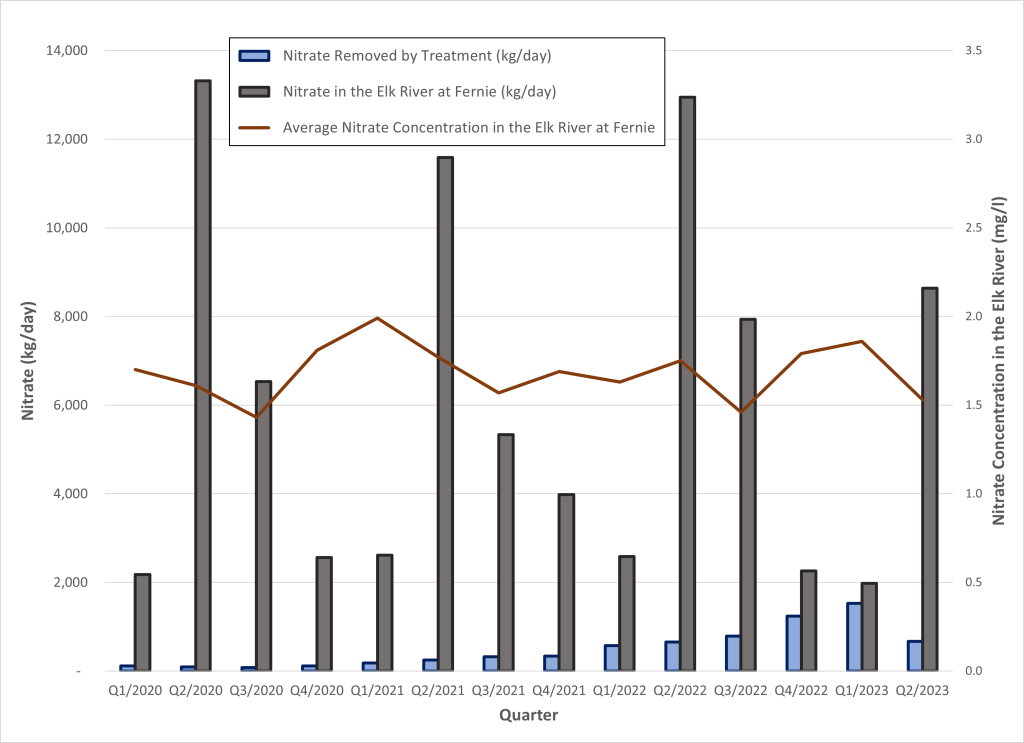
The graphs above show the total estimated amounts of selenium and nitrate that were in the Elk River at Fernie as grey bars, the average measured concentration of these substances in the river as red lines, and the amount of selenium (green bars) and nitrate (blue bars) removed by treatment, each quarter.
The substance amounts removed by treatment (green and blue bars) decreased during the second quarter of 2023 as a result of the FRO-S AWTF shutdown. Fortunately, the timing of the shutdown coincided with the rapid onset of higher flows due to snowmelt, which notably increased dilution of mine-affected water. As a result, the reduction in treatment had limited effect on surface water quality in the Elk River.
The substance amounts in the Elk River at Fernie are calculated from water quality data collected by EVR and flow data collected by the Water Survey of Canada. The amount of each substance varies with the amount of flow in the river. In general, the higher the flow the greater the amount, and vice-versa.


